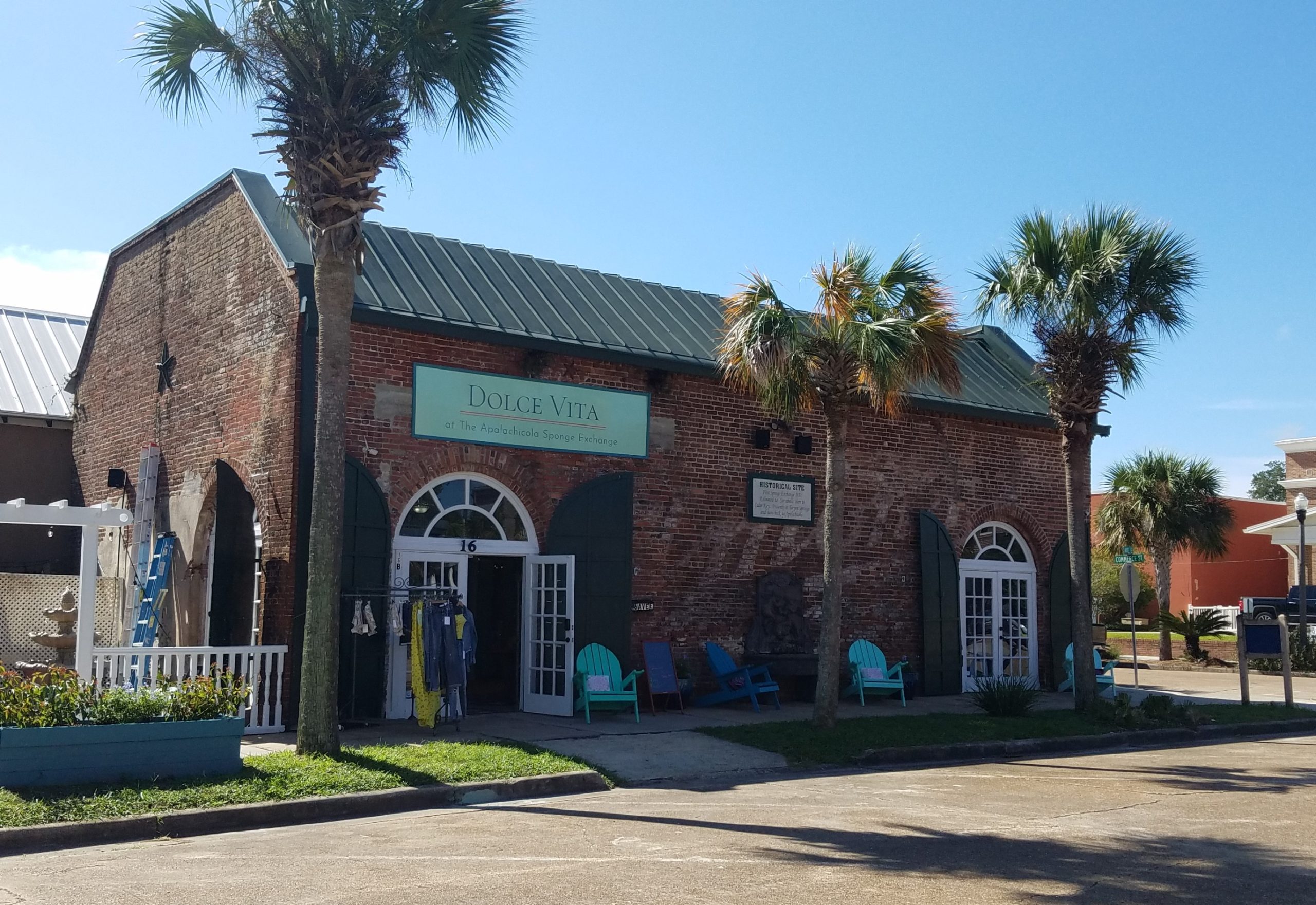
The Sponge Exchange is one of the oldest and most unique structures in Apalachicola, dating to the 1850s.
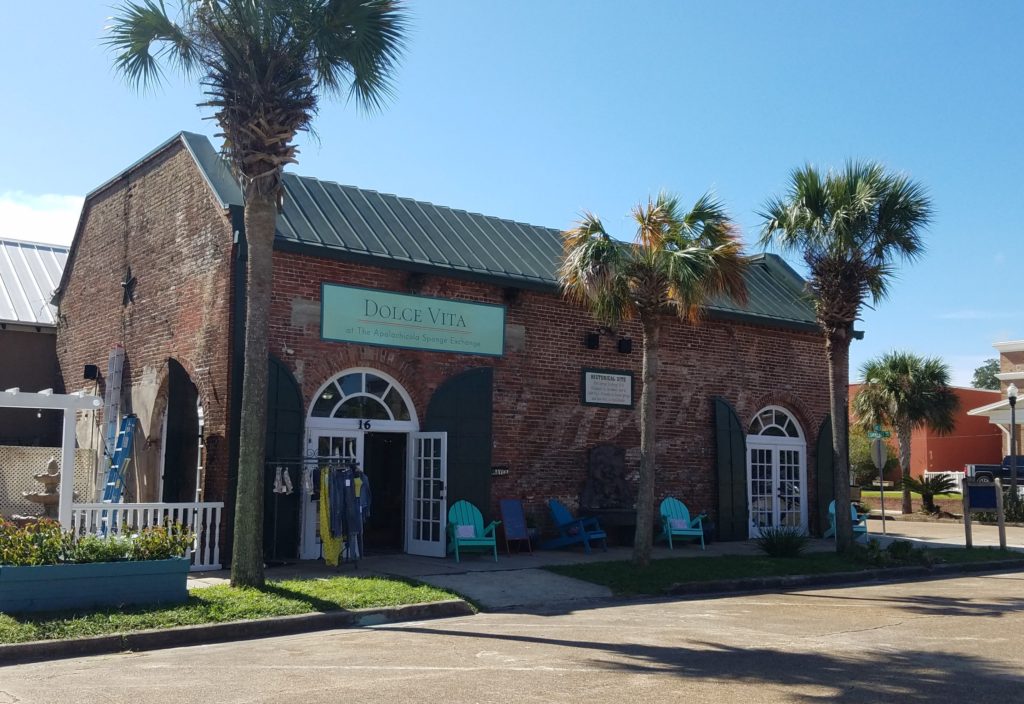
A Lucrative Trade with Greek Roots
In the 19th century, natural sponges were used for a myriad of purposes including hygiene, as packing material, as upholstery stuffing, for absorbing fluids during surgery, and even for cleaning military cannons.
The sponge industry had been active in Greece for hundreds of years, but the supply of sponges there collapsed in the late 1800s. Greek immigrants brought their centuries-old sponge trade practices to Florida and created an extremely lucrative fishery. Three locations emerged as the top sponge trade ports: Apalachicola, Tarpon Springs, and Key West. By 1900 Apalachicola was home to two sponge warehouses and had approximately 100 men employed in the industry.
The local sponge fleet was made up of small sailboats, often schooners, which embarked on harvesting trips in the northern Gulf of Mexico for about a month at a time. The process was labor-intensive. Each vessel carried several small dinghies. A pair of men worked each dinghy with one man rowing as the other looked for sponges using a glass viewing box pressed against the surface of the water. When sponges were spotted, they were harvested whole with the aid of a long-handled hook. Upon return to port, the catch would be purchased by a dealer who would then sell the product to buyers as far away as New York, NY, hence the name “sponge exchange.”
Cultural Traditions
Greek immigrants not only brought their sponge harvesting knowledge to Florida but also their highly respected boat building skills. Moreover, their families brought vibrant cultural and culinary traditions from the Greek Isles to their new homes. These historical and cultural components of Greek heritage left a lasting legacy on Florida that can still be found today. For example, descendants of Greek sponge divers, boat builders, and their families still live in Apalachicola. Similarly, Tarpon Springs, the “Sponge Capital of Florida” has one of the most vibrant Greek communities in the nation.
New Diving Technology Increases Harvest and Risk
The arrival of diving technology in 1904 brought more efficiency but also more risk. Using this technique a diver wearing a brass helmet, diving suit, and weight belt would walk along the sea floor breathing through a long air tube connected to the sponge boat. This method made the industry much more lucrative but also brought more tragedy.
The Pensacola Journal reported on April 1, 1905 that a “Greek sponge diver named John Sclowers died from the effects of deep sea diving on the sponge reefs near Carrabelle the first of the week. He was a member of the crew of the schooner Elizabeth Ann, Capt. Henry Mitchell. After remaining in twenty feet of water for several minutes Schlowers was pulled up from the reef and to the deck of the schooner where he died in a few minutes. The water pressure was too much for the poor fellow. The deceased has a wife and two children in Greece and they have been communicated with. The remains were interred at Carrabelle.”
The Industry Declines
Overharvesting and a disease called sponge blight led to the depletion of the sponge population. The invention of the synthetic sponge was another death knell for the fishery. The trade faded into history for decades.
Rehabilitation of the Sponge Exchange Building
The Sponge Exchange building sat neglected and in danger of collapse for some time. In the 1990s it was purchased and restored by Architect Lynn Wilson-Spohrer. She modernized it with HVAC, plumbing, and lighting while preserving historic elements. In 2015 Wilson-Spohrer was recognized with a Florida Main Street award for her valuable contributions to historic preservation in Apalachicola which also include the Harrison-Raney cotton warehouse that houses the Apalachicola Center for History, Culture, and Art; the Montgomery building; and the Coombs Inn. Wilson-Spohrer’s preservation and rehabilitation projects are valued at over $4 million in investment to the downtown commercial district.
Architectural Details
On the interior, note the exposed original brick walls and wrought iron tie rods. Tie rods serve as structural reinforcement by bracing the masonry walls against bowing. They are anchored through the exterior walls to the decorative star-shaped anchors on the exterior, a common feature of 19th century brick buildings. Also note the gables with parapets and corbels near the roof line. The building has no windows. The arched doorways once had fitted iron double doors.
The Revival of a the Sponge Trade
Commercial sponge harvesting closed in this area in the 1930s but has had a resurrection in recent years. Today you can visit the Apalachicola Sponge Company to find sponges sustainably harvested in north Florida waters. Although present-day sponge divers use similar diving techniques as the 19th century Greeks, an understanding of the sponge’s biology led to the development of sustainable harvesting methods. Cutting a sponge just above the base leaves enough tissue behind to allow for regeneration. In addition, squeezing a sponge after harvesting releases spores that facilitate reproduction.
Benefits of Natural Florida Sponges
Florida sponges are considered to be some of the world’s finest. In addition to commonly being sold for bathing, they are also recognized for artistic and medical uses. The popularity of natural, locally-sourced products is one reason for their popularity. However, they are also appreciated for their superior absorption and durability compared to synthetic sponges. Discover the benefits of natural sea sponges from Apalachicola for yourself.
Photo Gallery
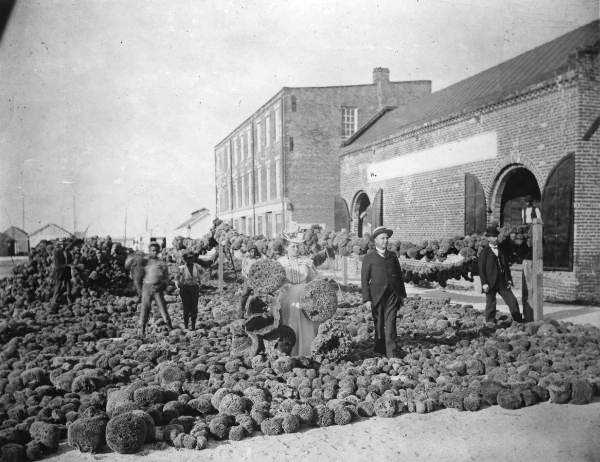
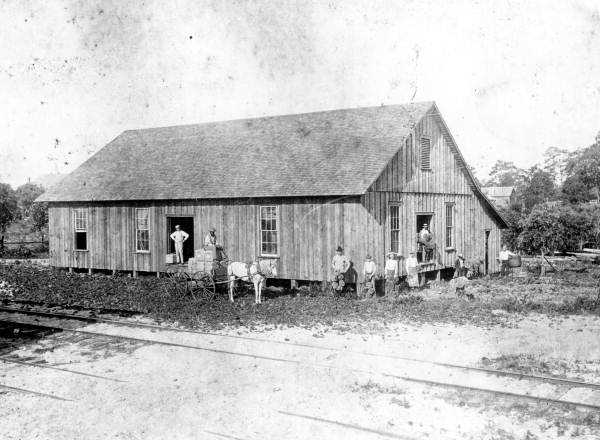
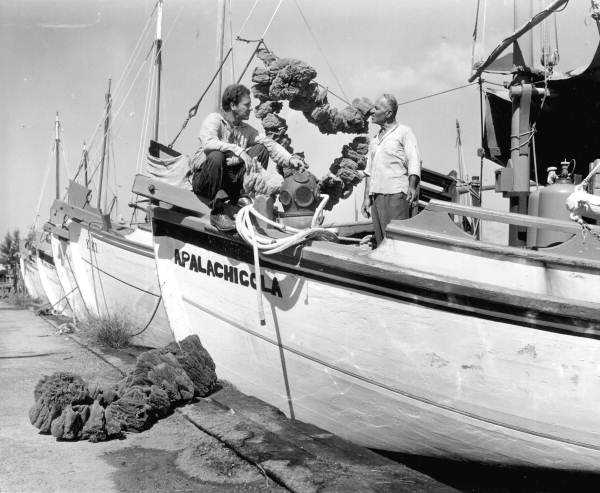


Image from the Library of Congress.
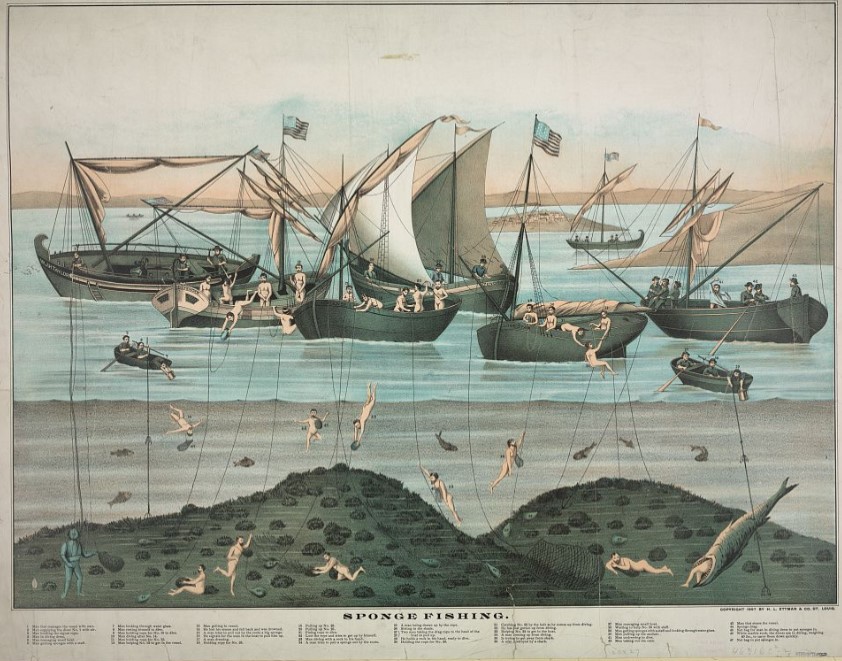
Links
After 70 Years, The Sponge Grounds Off The Forgotten Coast Are Reopened For Harvesting. 850 Magazine, October 2014.
Mystery of the sponge boat ‘Apalachicola.’ Apalachicola Times, Feb 6, 2018
A History of Franklin County Commerce. Apalachicola Times, Feb. 17, 2018
The Naked Sponge Divers of Kalymnos Island, Greece. Greeker Than the Greeks
The Greek Sponge Divers Of Tarpon Springs. Forbes, September 4, 2019.
The Greek Community of Tarpon Springs (University of South Florida online exhibit)
Dolce Vita at The Apalachicola Sponge Exchange (The current business operating in the historic building. Includes a recent photo of the building).
Apalachicola Sponge Company (A downtown Apalachicola business that has revived the local sponge trade).
Main Street, Wilson honored with awards. Apalachicola Times, September 2, 2015.
Special Thanks
The Sponge Exchange historical plaque and this associated web page were made possible with a generous contribution from Dr. Evelyn Ploumis-Devick in honor of the Ploumis family.


